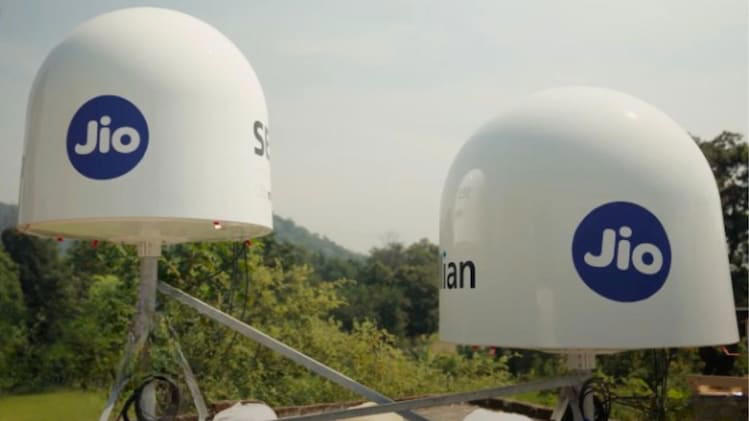At the Indian Mobile Congress, Reliance Jio introduced JioSpaceFibre, a satellite-powered broadband service. In contrast to traditional broadband, which relies on cables or fiber optics, JioSpaceFiber leverages communication satellites to offer internet connectivity. JioSpaceFibre sets itself apart from both JioAirFiber and Jio Fibre with its unique technology.
A satellite dish, positioned near your residence, serves as a link for data exchange with Earth’s orbiting satellites. (Photo credit: Business Today).This technology extends internet accessibility to regions with no access to traditional cable or fiber connections, particularly rural areas. It’s important to acknowledge that satellite internet can demand slightly increased response time because of the data traveling to and from space.
JioSpaceFiber has commenced its deployment in specific Indian regions, including Gir in Gujarat, Korba in Chattisgarh, Nabarangpur in Odisha, and ONGC in Jorhat, Assam. Reliance Jio has partnered with SES, a Luxembourg-based company, to offer this service. This innovative initiative is aimed at transforming the internet connectivity landscape in India.
Comparing Cable Broadband to Satellite Internet in terms of speed, coverage, and latency:
Broadband internet speeds can fluctuate depending on the type of infrastructure employed. Fiber, being the fastest medium, can offer speeds exceeding 1000mbps. While satellite internet does provide high speeds, cable internet typically surpasses it in both speed and reliability. However, satellite internet gains an edge in terms of coverage, as it can reach nearly any location. This makes it a practical choice for individuals residing in rural areas without access to cable or fiber connections.
There are three main categories of Earth-orbiting satellites:
1.Geostationary Earth Orbit (GEO) satellites: These satellites orbit at a fixed altitude of 35,786 km above Earth’s surface and synchronize their movement with the Earth’s rotation, effectively staying in a constant position relative to the ground. Due to their size and high altitude, only three GEO satellites are needed to cover the entire Earth.
2.Medium Earth Orbit (MEO) satellites: MEO satellites are positioned between 5,000 and 12,000 km above the Earth. Their lower altitude results in lower latency compared to GEO satellites, but it requires a larger number of spacecraft, typically ranging from 8 to 20, to achieve complete global coverage.
3.Low Earth Orbit (LEO) satellites: LEO satellites operate at altitudes ranging from 850 to 2,000 km above the Earth’s surface. They offer the lowest latency among the three orbital types. However, LEO networks require a significantly larger number of satellites to ensure comprehensive coverage, and their lifespan is affected by atmospheric drag.

